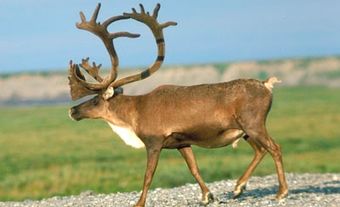Maritime Archaeology
Maritime ARCHAEOLOGY in Canada has been growing greatly over the past 40 years, with much work being carried out by archaeologists at the Canadian Parks Service (CPS) and by provincial avocational groups, especially in British Columbia and Ontario. The subject is only taught occasionally in an ad hoc manner at a few Canadian universities, but increasing numbers of Canadians are going abroad for postgraduate qualifications in the field. At present there is work taking place on the Atlantic, Arctic and Pacific coasts of Canada and in a number of interior waterways and lakes. British Columbia
In BC, most work has been carried out by the Underwater Archaeological Society of British Columbia (UASBC), a large, successful and mostly avocational group that was formed in 1975. The UASBC's has published seven regional shipwreck inventories. These cover dozens of 19th- and 20th-century shipwrecks that count among the more than 1500 shipwrecks found in BC waters. Among the particularly interesting wrecks studied were the BEAVER, the first steamship on the BC coast; the Zephyr, which carried granite columns for the San Francisco mint; the USS Suwanee, a Civil War period warship that hit a reef and sank off the north end of VANCOUVER ISLAND in 1868; and the Ericcson, a 1852 steamship with a revolutionary caloric engine that sank in 1892 without its John Ericsson-designed engines. The UASBC also carried out shallow underwater excavations of a 6000-year-old shell midden at Montague Harbour on GALIANO ISLAND in the 1980s. Fishermen have hauled up undated Chinese glazed jars from at least two sites off the west coast of Vancouver Island, but no exploration of the actual wrecks has yet taken place. Other members of the society have located, mapped and published on sidewheeler and sternwheeler wrecks in the Kootenays.
The UASBC also has public outreach programs and teaches the Nautical Archaeology Society (NAS) underwater archaeology courses. The Vancouver Maritime Museum and its former executive director, James Delgado, have been involved with much of the society's work in addition to providing storage and conservation facilities for its discoveries.
Other attention in BC waters has focused on the search for the TONQUIN, a fur-trading vessel sunk in 1811 and likely one of the earliest European wrecks on the coast. An exciting recent development is the discovery of evidence for deeply submerged ICE AGE settlements along a possible migration route for earliest human settlers in North America.
Ontario
In Ontario, much of the maritime archaeology is conducted by the half dozen regional and local chapters of the Save Ontario Shipwrecks (SOS), which has similar goals and programs as the UASBC. Founded in 1981, SOS also has a strong mooring buoy program to protect historic shipwrecks from anchor damage. The program also includes putting plaques on wrecks to identifying their history and promoting maritime heritage preservation by leaving artifacts in situ. Ontario has several thousand shipwrecks, mainly in the GREAT LAKES, and along the ST LAWRENCE River and RIDEAU and Trent/Severn Canals. The infestation of zebra MUSSELS there has been a mixed blessing. Water clarity has been vastly enhanced but most of the wrecks are now covered in a layer of mussels.Other groups have located the early-19th-century wrecks of the Hamilton and Scourge, American warships converted from merchant vessels and sunk in a storm in Lake ONTARIO near Hamilton during the WAR OF 1812. Because of their depth of 91 metres both ships are in a remarkable state of preservation with details like figureheads well preserved.
Québec
In Québec, avocational divers have formed a similar society as the Ontario SOS after the discovery, in 1994, of the bark Elizabeth and Mary. The latter sank in one of the ill-fated invasions of QUÉBEC CITY by Sir William PHIPS in 1690. The wreck, which is the oldest located shipwreck in Québec, has been excavated and interpreted by a unique collaboration between these avocational divers and the Underwater Unit of the Canadian Parks Service. The site has revealed a treasure of artifacts to interpret early-17th-century maritime ship construction and shipboard life.

 Share on Facebook
Share on Facebook Share on X
Share on X Share by Email
Share by Email Share on Google Classroom
Share on Google Classroom


